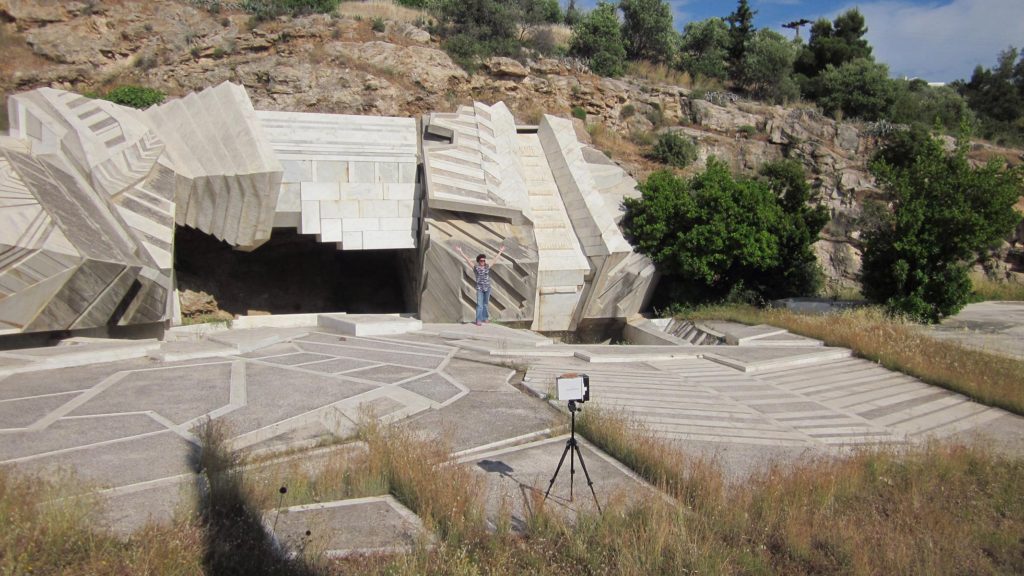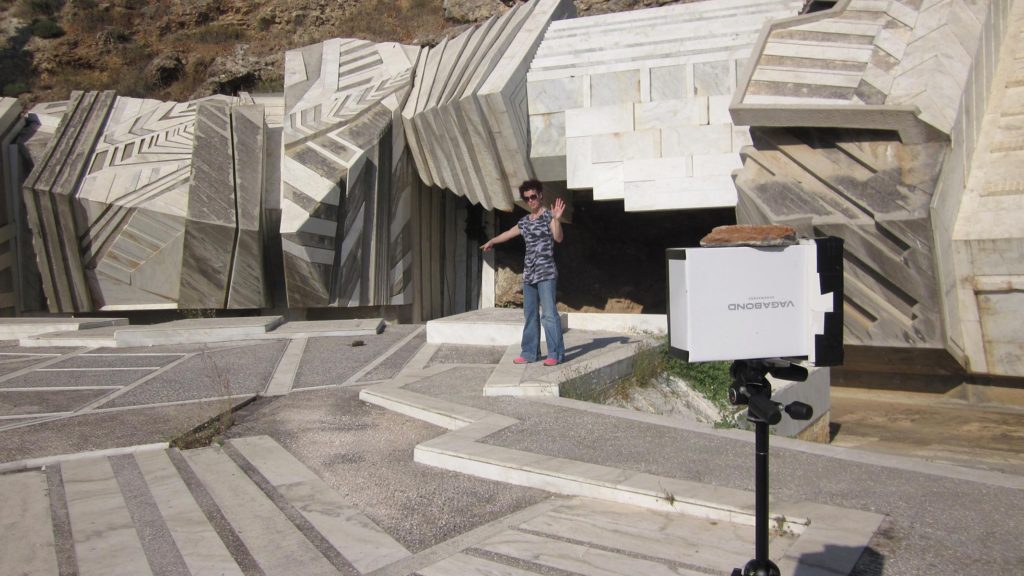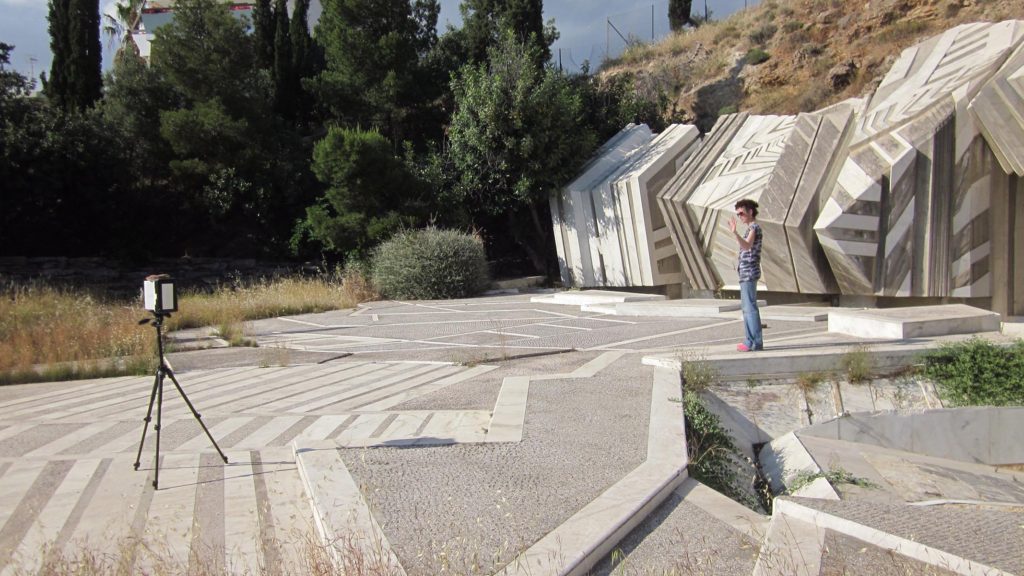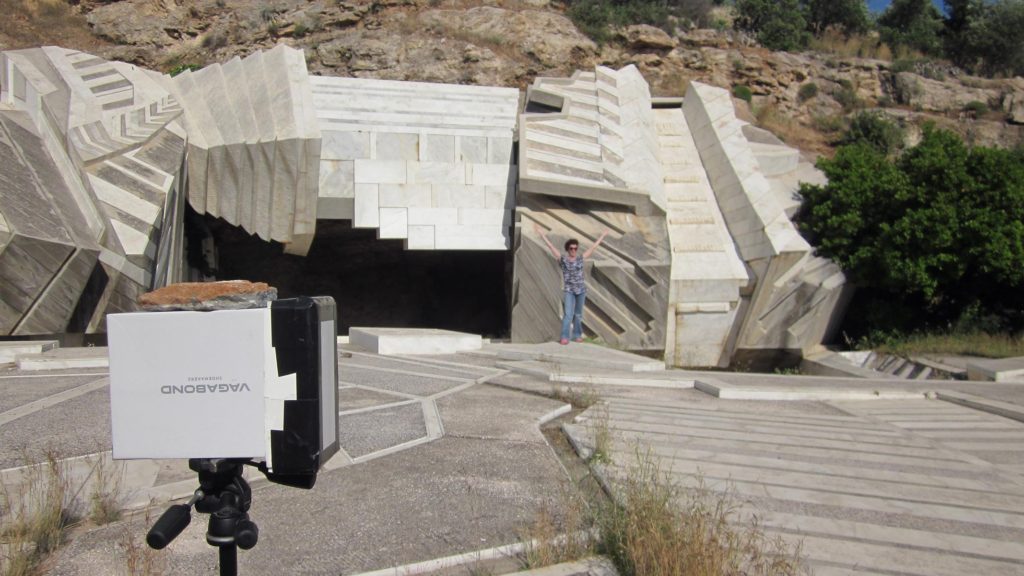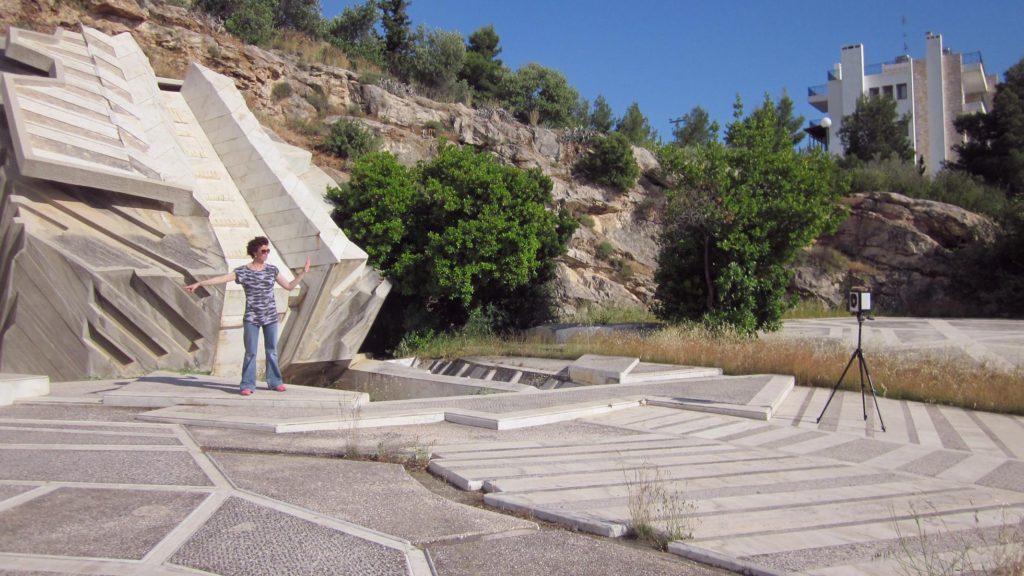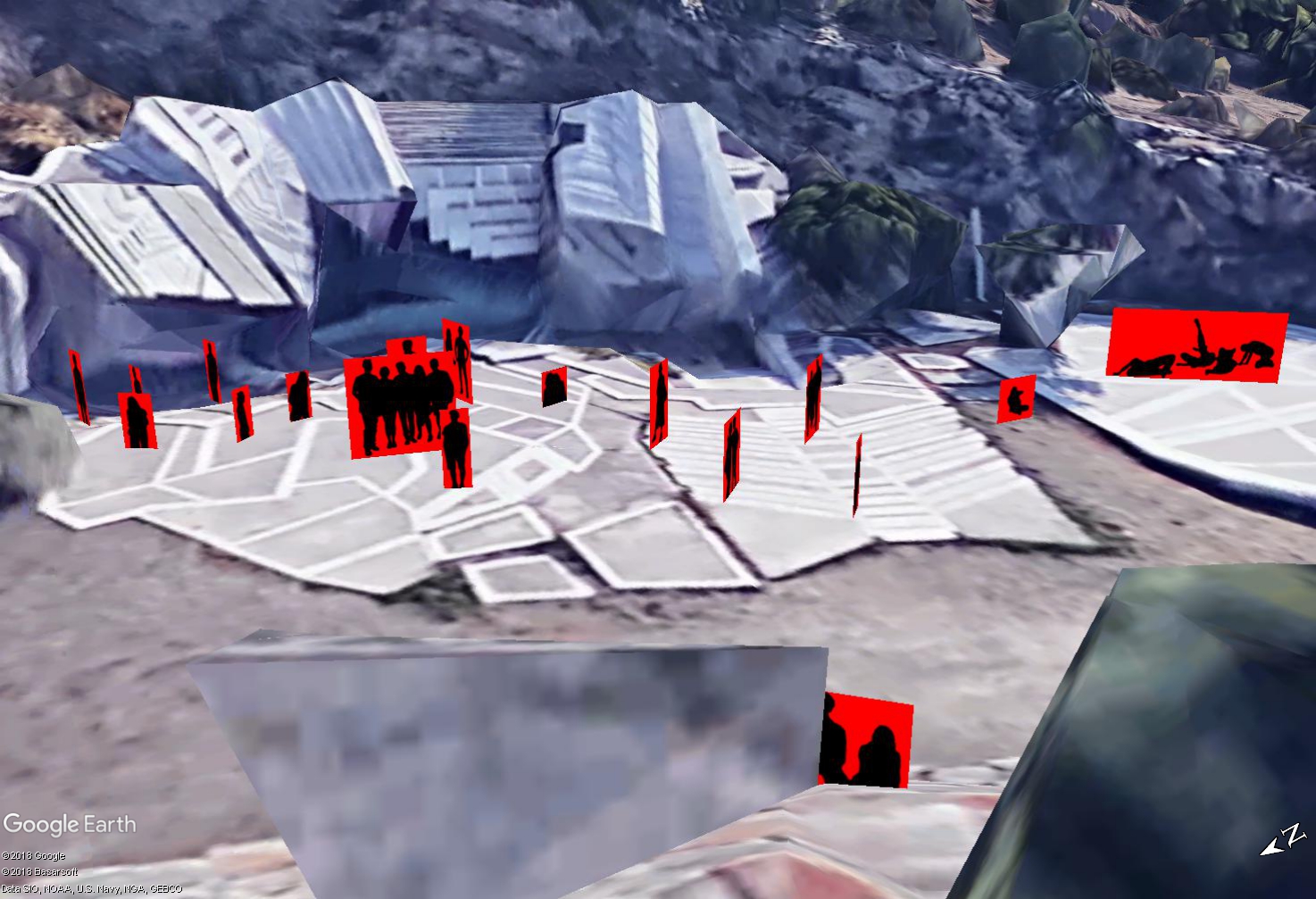In situ installation at the Aexone sculpted theatre and online installation, conceived for the exhibition Out Score, 2019
Olga Venetsianou and Angela Svoronou
Click here Grand Tour Fragments (173 downloads) to view the digital installation. You need to have Google Earth installed.
This is the video documentation of the online installation
Description
This is a haptic/digital installation. In its physical form, the photo-taking of a Grand Tour visitor is reenacted. In the digital form, a digital footprint of the photograph is created, in the exact location on Google Earth. All the snapshots are marked by means of a red flat surface. Thus, a spatial construction is created, based on the location of the visitors, not their image.
The highly educated, aristocratic visitor of the 19th century who made a stop in Athens while on his Grand Tour, would make sure to bring back a new kind of trophy: the recently discovered invention of photography. No need for him to remove and take pieces of stone from the antiquities he visited; He could simply take pictures!
The visitor sets up his heavy wooden field camera and is photographed together with the monument in order to prove that he too was there, in order to become himself a trophy and to assure his place in posterity. In the end those pictures were lost but the camera remained, the monument remained, testifying to the presence of the visitor.
The field of vision of the photographic camera defines the part of the monument (theatre) that the visitor would see. The visitor and the photographic camera are one. Now the spectator takes the place of the visitor-grand tourist in front of the photographic camera and is photographed in order to pass as well into eternity.
In the beginning of the 21st century, the act of self-photographing constitutes a daily practice. Contemporary sightseers – tourists – take pictures of themselves in front of ancient monuments, in front of magnificent views, anywhere and anytime, often using the ultimate tool, the «selfie stick». Those pictures that we call selfies do not require a lot of effort or time. Therefore they do not warrant the passing of the photographed person into eternity but simply witness his or her presence on a single moment in time and space. If we think of the 19th century visitor’s photographic portrait as a rock on a sandy beach, then perhaps the modern day tourist’s selfies could be perceived as nothing more than the grains of sand.
The work was inspired by the following local legend:
The shepherd who grazed his herd at the foot of Mount Hymettus in the area of the ancient demus of Aexone in Attica, observed on that sunny afternoon of May of the year A.D. 1841 a group of people that camped on the site of the abandoned theatre. Obviously it was the company of a traveller who visited the sites of Attica before continuing on his journey to the Middle East. The Grand Tour, this fashion of the last years, brought dozens of visitors to Attica each year, to the great pleasure of the shepherd who on top of enjoying the spectacle, secured a small income by selling the milk of his herd as well as his services as a carrier. But on that afternoon, the shepherd had to look again and again; He then approached the theatre as much as he could without being noticed in order to be sure that his eyes did not deceive him. And indeed he made no mistake: On that day, the traveller was a woman! This was testified not so much by her clothes, for she was attired as a man, but mostly by her walking, by the shape of her figure and by the bushy curls of her hair, as well as by the shiny earrings glittering on her ears. The female traveller – if she could be defined by that name – stood in front of the monument and an assistant took pictures of her in different postures on various spots, always with the white marbles of the theatre as background. Those photographs were lost forever. Some believe that they were ruined during the development process or during the shooting because of the photographer’s technical inexperience. Others claim that she destroyed them herself to protect the monument from the vandalism of visitors. In the archives were found some pictures obviously overexposed as if someone had submitted the surface of the paper to an extreme amount of light. Everything is possible, answered to our question on the subject, the Curator of Antiquities in charge. According to him, women in that time did not have the technical expertise to take photographic pictures of optimum clarity and adequate tonal range. As an example he stated the well-known British photographer Julia Margaret Cameron whose photographic works are mostly out of focus.
Short Biographies
Angela Svoronou was born in Athens in 1976 and studied painting at the Athens School of Fine Art. From 2002 to 2005 she studied photography in London where she obtained an MA in Photography from the London College of Communication and an MA in Fine Art from the University of East London. She has received scholarships from the Alexander Onassis Foundation, from the Lilian Voudouris Foundation and from the Greek Ministry of Education (P. Triantafylidis endowment). She represented Greece in the 13th Biennial of Young Artists of Europe and the Mediterranean (Bari, Italy) and has exhibited in more than sixty solo and group shows in Greece and abroad. She currently teaches full time at the Athens School of Fine Art.
Olga Venetsianou has studied architecture in the Canterbury School of Architecture in the UK and in the National Technical University of Athens (2002). Following a few years of architectural practice, she went on to complete the MA in Digital Arts in the Athens school of Fine Arts (2006), where she was awarded a state scholarship for exceptional performance. She holds a PhD from the School of Architecture – University of Thessaly (2014) funded by a scholarship from the Alexander S. Onassis foundation. She is interested in the spatial qualities of the projection system, in particular the effect of the design of the projection surface in increasing viewer participation in projection-based installations. She is an adjunct lecturer in the University of West Attica. Her work has been published in scientific journals and presented in international conferences. She also works privately as an architect, having collaborated in housing, cultural and commercial projects in Greece and abroad.
